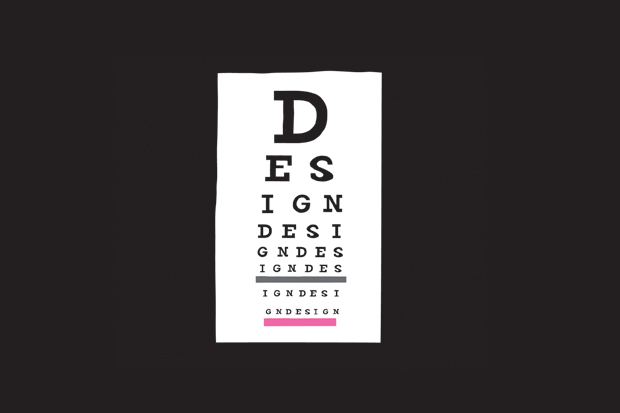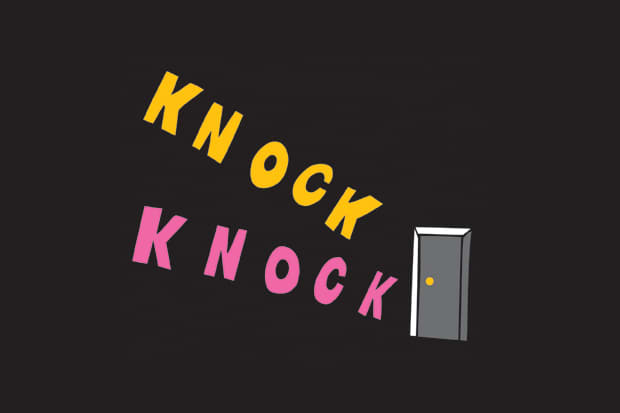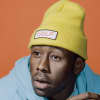As a magazine devoted to talking about what is most current and most vital in the music world, we have infinite respect for those outlets that do the same in other arenas and genres. We consulted a handful of discerning minds—makers, curators and packagers—to talk about where and how they discover the best of the new in art, film, literature, comedy and design. After all, everyone needs an editor.
![]()
Who: New York’s Marlborough Chelsea Gallery director, Pascal Spengemann
What they do: Offer a big-league roster of fine artworks to deep-pocketed buyers.
What to look forward to: Double Hamburger Deluxe, a summer group show based on a 20-foot-wide painting by Andy Warhol, and, in September, an immersive environmental installation by Jonah Freeman and Justin Lowe.
I’ve always subscribed to an organic way of finding artists. When I started out in this industry, we opened a gallery [Taxter & Spengemann] because we knew some artists that we wanted to show. You show those artists and they have friends who are artists, and it builds on itself in this way that’s related to your social life and how you develop friendships. Sometimes it’s hard for me to extricate personal relationships from work, for better or for worse. It’s not that different from record labels, or what record labels used to be, where you gather around you a roster of artists and you have, based on that roster, somewhat of an identity. Maybe it’s a particular aesthetic, or maybe it’s that you’re eclectic, and you grow those artists into more of a presence internationally, institutionally and hopefully financially. So I come from a real indie label type of situation, a startup with myself and two other partners, to an organization, now, that has a lot of history and has way more than sustained the careers of a lot of artists over the years. It’s like moving up into the majors a little bit, and that has its own particular challenges. It’s more complicated. There are more people in the conversation. It’s a huger space. Our artists need to be able to handle that level of exposure and be able to fill that big room with compelling artworks. The kinds of artists that make sense for this situation aren’t necessarily the ones that make sense in another. It’s like if you’re booking a small club versus Madison Square Garden.
Some galleries don’t have good artwork in them, and some have really great artwork. But that’s like having a hip noise label. They’re all pretty hip compared to the rest of the world. So the idea of something being new isn’t the concern. I don’t feel very connected to the notion of being contemporary. It’s more about what makes sense for the audience. Marlborough has a really broad audience: some people just cruise by and decide to look in, and that can be appealing. My job is just trying things together that make sense in this context. It sounds dry, but I don’t think it’s in opposition to timeliness or doing something that’s cool right now. These days, everything is all over the place. Every historical moment is happening simultaneously. Young artists are totally invested in exploring abstraction or process-based artworks, things that have had incredible moments in history. And I don’t think that’s bad. I don’t think everything has to be stuck in history.
It’s exciting to find a good home for a really great work of art—that certainly gives you a little spring in your step and it’s how this world goes around. But, honestly, the best thing about the job is coming into contact with these artists that have really peculiar ways of thinking, really interesting ideas and unconventional ways of approaching things. These are interesting people to be around and to talk with, and they don’t always just blurt out everything they’re doing. It emerges over time, and working with an artist over a long period is amazing because you get to unravel their way of thinking. You get the benefit of their approach to making their work and their approach to thinking about the world. That’s what drew me to artists in the first place: that you can engage things that have a tradition in a way that encourages breaking tradition, that this transgressive behavior can make an example for the rest of your life.

![]()
Who: Criterion Collection editor and executive producer, Kim Hendrickson
What They Do: Offer up a monthly selection of well-packaged and informative editions of must-watch classic films and new releases for both the contemporary viewer and the diehard cineaste.
What to look forward to: A Hollis Frampton Odyssey, Harold and Maude, Being John Malkovich, Chaplin’s The Gold Rush, the Spalding Gray films (Gray’s Anatomy and And Everything is Going Fine), and Lonesome, a nearly silent film from 1928.
Criterion is not the maker of the canon. I think what’s important for us, and what we always say, is that there always has to be an interesting story for us to tell. [From there] there’s an acquisition side and there’s an editorial side when we’re actually planning the schedule. They’re not separate things—but they are separate things. When we sit down to plan the schedule, we’re working with an existing universe of film titles that we already have the rights to. Criterion has the films come in from a lot of different sources. So the Janus library—Janus Films is a sister company of Criterion—is comprised of the Ingmar Bergman holdings and Akira Kurosawa and Federico Fellini and Yasujirō Ozu, so that entire catalog is a source of possibility for Criterion. We have relationships with every studio right now except for Warner Bros. Every year we have to decide which films we’ll be presenting, and we’re always interested in providing our viewers with a varied diet. So you can only release a couple from Ozu or Bergman or Kurosawa or Fellini or Antonioni per year. We like to offer film from around the world and different directors and different types. So, we’re always trying to represent a range of the collection. Within that, even more specifically, we try to balance contemporary films with classic films.
We’re taking in all of these potential titles and determining what is the best composition on a per-month basis and on a per-year basis. If we’re releasing something contemporary like Tiny Furniture, we want to balance that with something that is a known, tried, true classic. It’s about the breadth of the collection, it’s about the breadth of ideas. We’re not movie snobs. We’re the opposite of movie snobs. We recognize that there are important genre films and genre films have an important life in the dialogue about cinema, so we have something like House in the collection, and we have the Monsters and Madmen box. With respect to Tiny Furniture, which is something that’s been the cause of a lot of attention for Criterion and just a lot of discussion in general—we’re not saying that Lena Dunham [the director] is different, but what she had done was unique to a set of circumstances. She started out as part of this YouTube generation, she made some films, she did this with her own money, she was unschooled as a filmmaker. It was an opportunity for us to tell a filmmaking experience that was almost a story in and of itself. We release a lot of first films from directors who have gone on to lesser or greater success thereafter, but they were all exemplary of a kind. There has to be some kind of connection that we’re feeling—and it may be producer-driven, it may be a general consensus of the company, but it’s based on a diversity of ideas. I mean, one of the things that I will say from a personal standpoint is we don’t have a lot of female directors, and we don’t have a lot of young female directors, and we don’t have a lot of young female directors doing things with their body in the way that Lena does. That, to me, makes her unusual. So those kinds of discussions inform the way that we think about titles.

![]()
Who: TGC literary agent, Chris Parris-Lamb, on New Directions and Ugly Duckling Presse.
What they do: New Directions has been a champion of exemplary but under-rated writers, republishing great titles that have fallen out of favor or bringing foreign writers to an English-speaking audience. Ugly Duckling Presse, in turn, has continuously pushed the boundary in experimental books-as-objects.
What to look forward to: Antigonick by Anne Carson and The Secret of Evil by Roberto Bolaño from New Directions; Moscow by Yevgeniy Fiks, Christian Name by Lawrence Giffin and Thank You for the Window Office by Maged Zaher from Ugly Duckling.
New Directions has been around for a long time. It was started in 1936 by James Laughlin, who was a student at Harvard—Ezra Pound was the person who urged him to start a publishing company. Some of the earliest things they published were Ezra Pound and William Carlos Williams. They were the first publisher to bring The Great Gatsby back after it had fallen out of print. People forget that F. Scott Fitzgerald was forgotten for a time, kind of like Faulkner in the mid-century. The Great Gatsby isn’t avant-garde necessarily, but from its very inception New Directions’ mission has been to draw people’s attention to things they need to be paying attention to.
Their backlist is built on names like Borges, Rilke, Nabokov, you know, Nobel Prize-winning writers that they were the first to publish in English or who they have kept in print. And then, more recently in the ’90s, they famously discovered—that is, they brought into English—W.G. Sebald and Javier Marías. In every one of these cases—Sebald moved to Knopf, Javier Marías’ next book was just acquired by Knopf, and of course, Bolaño famously moved to FSG—these premier mainstream trade publishers all kind of took on these writers after New Directions had brought them to a larger audience. I honestly think that giving writers who’ve been given up on by the mainstream a home is as important as discovering writers. Anne Carson was published for many years by Knopf and then she had this crazy book that she wanted to do called Nox that would be incredibly expensive to produce. My understanding is that Knopf kind of balked at it—this kind of art object that was, you know, not a book of poetry. New Directions did it, and it was acclaimed. In recent years, they’ve brought László Krasznahorkai and César Aira. They’re cornering the market on a certain type of high-brow, internationally-minded avant-garde literature. The avant-garde or taste-making literature has always been a relatively rarified province. In some ways, we look back in hindsight at these writers who are now kind of canonical, but we see them through the lens of their success, and at the time, they were kind of niche writers. I saw somewhere that Donald Barthelme, who published dozens if not hundreds of stories in the The New Yorker—his early collections never sold more than 9,000 copies in hardcover. I mean, those are New Directions numbers. That’s niche publishing; you can’t sustain a big publishing apparatus on numbers like that.
I admire the fact that Ugly Duckling Presse does things that no one else does— the most experimental prose, the most experimental poetry, experimental plays that aren’t necessarily produced—but that they also pay a lot of attention to books as objects and print culture. I think that’s really remarkable. They’re certainly not a name that comes up in publishing lunches or a place that mainstream publishers are looking at as a talent farm, but that’s because what Ugly Duckling Presse does by definition is avant-garde and is niche in a good way that is not served by publishers in the skyscrapers. They’re more obscure.

![]()
Who: Walker Art Center design director and curator Andrew Blauvelt
What they do: One of the “big five” national museums in the US, Minneapolis’ Walker Art Center has distinguished itself by keeping a keen finger on the pulse of design. As both the in-house design director and a curator at the museum, Blauvelt has both a maker’s and a curator’s take on the current scene.
What to look forward to: Design from Metahaven, Jonathan Puckey, David McCandless, Nicholas Felton, and seeing the exhibition Graphic Design: Now in Production when it comes to your town.
One of the big transformations, in the time period between the last graphic design show at the Walker [1989] and our current Graphic Design: Now In Production is the Mac. There were losses of typesetters and all these craftspeople and production people that normally had a lot to do because of the specialization within how you produce something, how you print something. It was one of the first industries to be wiped out by the computer. That meant graphic designers had to learn more about typography than they ever did before. Now it’s to the point that, because so many people use the computer and the tools are innate within it, we have a whole font design cottage industry. The first wave was designers learning how to set their own type, control their own layout, make their own paste ups digitally. The second wave was the real promise of desktop publishing in the ’80s—graphic designers as users of print-on-demand services, things that will both automate production as well as distribute content. Designers have the same access now to a lot of these tools, but because the public is involved and there are many other people, it’s forced designers to up their game. Sometimes that’s good and sometimes it’s not so good because, on the one hand, it’s about value. What kind of value do you have when you call yourself a graphic designer? And sometimes that’s as crass as, like, what can you charge for it? I see a split in the field. One fork goes toward this kind of design management, design strategy, design innovation, which sees design as an essentially cerebral, white-collar enterprise. And then the other fork in the road is this revivalist blue-collar mentality around making culture—revival of silkscreen, letterpress, duplicator machines. It has a different vibe. It’s not totally nostalgic. I don’t know if that’s a reaction or not to all the virtualization around design, because in the old days you just made everything rather directly, and then it got put into a box.
One studio that I think is pretty avant-garde is Metahaven because they call themselves “researchers,” so this automatically displaces them out of a typical practice scenario. But they’re still very object-based and still very formally driven (even if they deny it). Their graphic language is the language of the internet. To a trained eye, you can discern the difference in it, but it’s partaking in that kind of free expression. They’re really placing themselves in this other weird context of things like Facebook, privacy arguments or anonymous hackers. I see it as a continuity of [design ideas] that started in the ’80s when there was really a rejection of a lot of the professionalization and the servile functions of typical graphic design in an avant-garde sense. Today’s avant-garde is just expanding those options, you could have a research practice, or you could become a publisher now. The only problem is that a lot of designers refuse to acknowledge that design is fashion—it is temporary, there is an aesthetic and there is a formalism to it. I don’t know if people would look at a great piece of wallpaper design and say, “Oh my god, who made that?” They might say, “Where can I buy it?” It might explain why a lot of design practice is starting to look like a lot of art practice. Maybe this is the unspoken strategy, that if it presents more like art, then maybe it signals that there is actually more to the story than just what you’re seeing.

![]()
Who: President of his own production company Friends Night, head of Fox-owned animation studio ADHD, Nick Weidenfeld
What they do: Create next-level comedy that continuously pushes the boundaries of what we think we’re comfortable with.
What to look forward to: A crop of wild new Saturday night shows on Fox next year.
Originally, I was a journalist. I had started [the magazine] While You Were Sleeping and was also writing other pieces as well. I was doing a piece for Esquire on Adult Swim—the early story of Adult Swim. While I was interviewing Mike Lazzo [Senior Executive VP at Adult Swim], he offered me a job as head of development. It was the weirdest thing. At the time, Adult Swim had no development. The shows were created internally with their staff, and they were a very small group. They were in Atlanta, I didn’t know many people outside of Atlanta. I’d come from New York and I’d been a writer, so I knew a lot of different people. I was definitely just more ambitious about going out and finding people. While they would create shows like Aqua Teen Hunger Force, they needed someone to help them grow and fill more time, and that became me. I would sort of develop the shows.
I wrote while I was at Adult Swim. I would write episodes of some of the shows when I was close with the creators. I wrote this musical called Freaknik: The Musical with my friend Carl Jones who was on Boondocks. After doing this for eight years and working with talent, I know how to develop shows. I really like the creative process. For Fox, I’m really building a studio and production company that will create lots of different programs and comedy animation for their Saturday night programming. I’m not on the creative side of it. Adult Swim pre-existed me, so I was trying to create shows that I felt served the brand of Adult Swim. We’re creating the brand for this new thing. I think there’s room in comedy for it to be younger and have a different kind of energy and sensibility than Adult Swim has because it’s been defined. I want to make stuff that feels like it’s responding to 18 to 34 year olds now—what we like, and how we feel. If you’re raised on Twitter and Tumblr and the internet, your way of understanding shit is going to be different. You’re going to process information differently. I personally think people want something that’s positive. Not positive as in, like, happy, but Odd Future to me feels like something that’s indicative of a movement. This high energy—even if you’re doing shit that’s totally fucked up and you’re pressing a lot of cultural buttons—Odd Future is about a collective. It’s about people wanting to be part of a big group. That’s what I think people are going to want out of any kind of comedy they watch. I think they want something that feels more inclusive. Jackass, to me, is perennial because it’s a group of friends, and even if they’re fucking with each other, they’ll still be friends. A lot of the stuff I’ve made in the past is not that. It’s definitely more aggressive, more, Are you smart enough to get this? I think there’s room for something that is not snarky and not ironic, that’s earnest but still not lovey-dovey or whatever, that still can be really fucked up but done in a much more positive, inclusive kind of way. I really do look at movements like Odd Future and see that there’s a reason why people are getting behind it. They’re not saying, We’re better than you. I think comedy for a lot of years was saying, We’re better than you. It was awesome comedy, but I think it’s been done a lot.
To me, the number one example of where comedy has gone and what’s interesting about it—and it doesn’t even feel totally different—is Workaholics on Comedy Central. It’s positive, it’s incredibly earnest and sincere and it goes in totally insane directions. They fuck with each other and everything. You see the kids from Workaholics making something totally mature, and you look at something like Adventure Time on the kids’ side. They’ve got the same attitude: they’re both insanely earnest. That’s something that I don’t think you’d have five years ago. That feels very young and new to me. I watch that shit and I get excited about it too. I feel like it’s tapping into something bigger.



